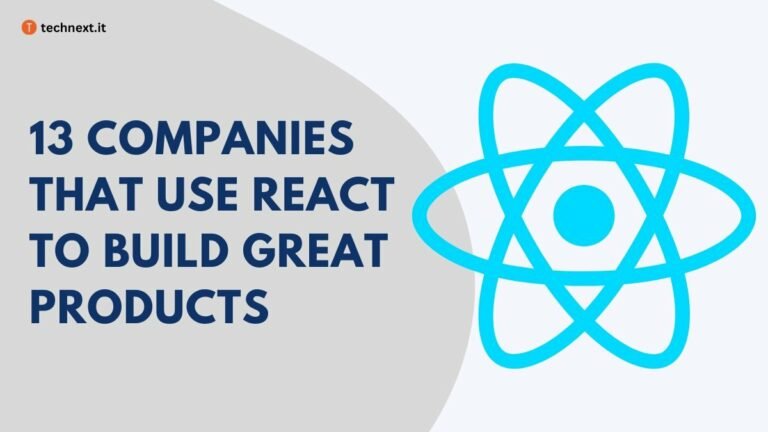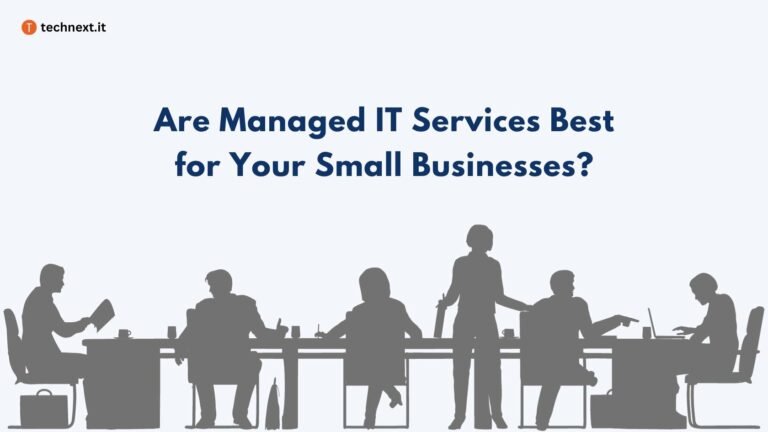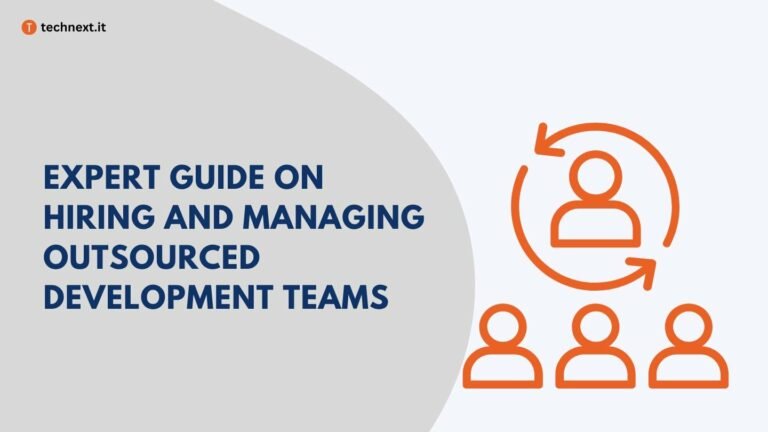Expert Guide to MVP Web Development with Cost Estimation
Explore the right way to develop MVP for your web development project. Know how much it may cost and a few tricks to reduce the overall development cost without sacrificing the quality.

There was a time when websites, even web applications, were pretty simple. Developers just needed to ensure everything worked properly.
But user’s expectations have changed a lot over the years. Web Application development projects are now as complex as any other tech product development. As a result, developing a web app costs a fortune nowadays; in some cases, it can go over millions.
Even after spending millions, you can say for sure that customers will like your website or not. In a world where 95% of tech products miss their mark, developing a web solution without proper testing is no less than gambling.
Smart entrepreneurs do not gamble. They make informed decisions. They test their web app idea with a minimum viable product to understand what their customers want.
If you are a smart entrepreneur and want to test your idea with an MVP web development project, then this article is for you.
What is MVP in Web App Development?
The initial stage of your startup is the MVP, or minimum viable product. Usually, MVP is a product with specific features for early customers to use and provide feedback.
As for your Web App MVP, It is a web app development concept that involves creating a minimal version of your web app with only the necessary functionalities to solve the specific problem and satisfy your early users.
Let me clear the concept for you with an example. We all heard about the famous “Airbnb.” Just like other startups “Airbnb” also started with a problem. Founders Brian and Joe were struggling to pay rent, so they decided to rent out the extra spaces to conference attendees. From here, they got the idea of a great startup.
Later, when they wanted to start their startup, the 1st thing they did was launch their web app in August 2008. Back then, it was different from what you see today. It was a directory of events where locals could put up their spare space for the event, and the attendees could rent the space by calling the owners. It took only three weeks to build a simple website that served the purpose.

What Makes Developing an MVP During Web Solution Development So Important?
Now, you can ask what the purpose is, why you need to create an MVP for your web app, or why Airbnb’s founders created an MVP.
Why don’t the founders just launch the full-featured web application? Alternatively, why can’t you launch the main website? I will tell you the answer, but you need to hear the rest of the story first.
After the site was launched, two or three people, including one of the site’s founders, Brian, actually used it. On the first night, his host provides him with excellent hospitality, but when it comes time to pay, Brien forgets to visit an ATM.
The next day, he similarly fails the host, who was fine the first time, but after the second time, he is worried now, and his hospitality begins to be wary.
At this moment, the founders realize it would be great to take the payment upfront so that the only focus can be hospitality upon arrival. So they introduced the new feature of Payment first.
Similarly, after the event, users began to ask if they could use Airbnb’s services without attending any events for general reasons. This gave the founders a fresh vision: they wanted Airbnb to be as simple as renting a hotel room. They introduced the simple three-click booking system.
From the story, you can see that the web app of Airbnb was improved from the MVP based on what the users of the app wanted, not on what the founders had envisioned the first time.
If the founders worked for years and launched the perfect web app based on their vision, there was a chance for the startup to fail. But the MVP they launched first helped them to improve and become a company worth 75 billion dollars.
So let me summarize the purpose of an MVP; test the market demand of your web app, get feedback from your users, and improve the web app iteratively as per the demand of your market. This purpose is what makes developing an MVP during web solution development so important.
A step-by-step guide to MVP Web Development
Now that you know how important MVP is, you might wonder how to develop one. Here is my step-by-step guide for you. But before that, I want to remind you that MVPs are often seen as simpler versions of the final result, but that doesn’t mean you can compromise with quality.
You can mix and match alternative ways, but your MVP must meet user experience, performance, and functionality standards. It might seem easy to meet these parameters, but in fact, it often takes highly skilled developers to build an MVP instead of the final product.
Step 1: Conduct Research to Understand your Market
Before you start developing your MVP (Minimum Viable Product), you must ensure that the market wants your web solution. Conducting research is one of the best ways to verify your idea. Surveys, focus groups, and online research are some of your options. Your goal is to learn about your target audience’s demographics, interests, pain points, buying habits, and market trends.
Once you’ve made sure there’s a need, it’s important to look at your competitors and see how saturated the market is. Competitor analysis will help you decide whether to move forward or look for a place with fewer people.
Next, look at who are your target customers. Try to build accurate user personas by talking to potential users.
But you have to remember too much analysis can cause analysis paralysis, which slows down progress and causes missed chances. Once you have a clear idea, you should move from planning to developing an MVP.
It’s essential to keep an eye on crucial factors during this transition so you can plan the most of the chance to bring your MVP to life.
Step 2: Prioritize your Features and Functionalities
The 1st factor you need to finalize is the features of your web application MVP. Since it’s impossible to build everything at once, you have to choose the most important features to build.
You can use “opportunity statements,” which are based on a detailed map of the user’s journey that shows the “pain and gain” of activities like buying and solving problems. These statements help you figure out what your audience needs most.
A prioritization matrix is also a great way for you to figure out when to add core features during the development process. This matrix simplifies complexity by putting features into groups based on their effect, effort, and risk.
The matrix makes it possible to identify “must-haves,” “nice-to-haves,” “low-priority,” and “not in MVP” items. With this method, you can figure out which features are important for the MVP and which ones can wait until you have more resources.
Step 3: Choose the Right Technology Stack
While choosing the tech stack for your web app MVP, you need to focus on both front-end and back-end development. This collaboration between front-end and back-end work makes sure that your users have a smooth experience that combines good design with good usefulness.
In web development, development language and tools are divided into two major sections. Front and and Back end. Yes, some languages feature both frontend and backend. Yet, you have to choose the tech stack for both parts differently.
Your back end is where the system behind the scenes is built. Back-end development includes jobs like setting up servers and databases, building data models, and putting in place the core functions that make user interactions and data processing possible. For back-end development, security is your big concern. You can use PHP, Java, JavaScript, or security-focused tools to keep your data safe.
Step 4: Build Your Team
The right team composition plays a vital role in successfully developing your web MVP. To build the right team, you have to balance skills, experience, communication abilities, and cultural fit. Here are the steps you need to follow to build a synergistic team.
Figure out the roles:
The first thing you need to figure out is your team roles, which depend on the tech stack you choose. For example, if you want to develop your web application using Node and React, then you will need front-end developers (React), Designers, and backend developers (Node).
Determine the team size:
The second step you need to take is determining your team size, which depends on the project requirement, timeline, and complexity. For example, If you want to build the MVP faster, then you need to hire more people. If you have enough time or fewer project requirements, you can hire less.
Team building options:
Now, it’s time to build your web MVP development team. There are three primary team-building options based on project requirements and available resources.
1. In-house team
All your team members will be at your workstation. They will work in person and directly under your supervision.
Building an in-house team will allow you to develop your MVP faster, and you’ll have total control over the development project.
But it comes with a hefty cost. You will have to pay for the initial setup, rent, salary, and other benefits. If you are in the USA, you are looking at around a million dollars.
2. Outsourced team
Your second option is outsourcing your development effort to an outsourcing service provider. In such teams, you won’t be responsible for hiring or maintaining the team yourself.
You can go for onshore, nearshore, or offshore outsourcing. Onshore and nearshore outsourcing will let you build your team from the same or similar time zone. But both are as costly as building an in-house team, if not more.
In the case of offshore development, you may hire from developing countries like Bangladesh or India and save a significant amount of resources.
Read More: In-house vs Outsourcing
3. Hybrid team
Another option is to build a hybrid development team. Such teams are getting more popular nowadays a day. In most cases, they keep the backend development team in-house and outsource the front-end team.
Remember, all of those team-building models have their pros and cons. Especially if you are thinking of outsourcing them, you should be aware of the risks associated with outsourcing. So, do a cost-benefit analysis to determine which model is best for you.
Step 5: Develop, Test, and launch the MVP
The development stage is the most crucial stage of all. This is the stage when the main features of your web app are created and put together, making your concept and design a reality.
It doesn’t mean your MVP should not take months to develop. If possible, try to create the functionality inside the time period without going beyond the requirement. Remember that the minimum viable product prototype is not your final goal, so work quickly.
Don’t forget to test your prototype for bugs and fix them. You can use user input to improve your web application MVP. After optimizing MVP performance and efficiency to improve user experience, you are all set to launch your MVP.
MVP Development Cost
If you can code the MVP yourself, that’ll be a great idea to keep the cost minimal. It seems ideal, yet there are a lot more to consider along with the coding.
Developing a web solution may cost you 5,000 USD to 50,000 USD, and sometimes it can increase more. It would entirely depend on the complexity, modules, sub-modules, feature list, and aesthetics you want.
There are some critical factors along with the cost – on-time delivery, the quality you want, user experience design, and UI design.
In-House MVP Development Cost
In the USA, if you have an in-house MVP development plan, here is the cost according to Indeed salary data –
| Role | Number | Avg Salary | Cost |
| Backend Developers | 2 | $10,000 | $20,000 |
| Front-end Developer | 1 | $8,000 | $8,000 |
| QA Engineer | 1 | $8,000 | $8,000 |
| Project Manager or Lead or Software Architect | 1 | $15,000 | $15,000 |
| Total Cost = | $51,000 |
So if you set up an in-house team, you have to spend 51,000 USD per month just on the salary.
There is office rent, devices, HR, and other logistics and compliance.
So it will be around 60,000 USD per month, and let’s say you need 4 to 6 months to develop the MVP.
So In-house MVP development cost will be from $200,000 to $360,000 in the USA.
Outsourced MVP Development Cost
Another model can be outsourcing the MVP development. There are multiple ways to outsource MVP development. It can be an offshore freelance developer, offshore development partner company or dev agency, and nearshore or local development team.
Here is the detailed cost breakdown of the offshore MVP development cost.
Offshore MVP Development Cost with Freelancer
If you hire a freelance full-stack developer to develop your MVP, it will cost you from $2000/month to $5000/month if you hire any Bangladesh, Indian, or Pakistani freelance developer. If you hire European developers, that will cost you from $3500/month to $6000/month.
But I must warn you, this is a bit risky. There were several times customers reached out to Technext – an offshore software development agency, to redo or finish the MVP which was initially awarded to the offshore freelance developer. They are cost-effective, but chances are you won’t get a finished MVP or later, as you can’t scale the codebase.
Offshore MVP Development Cost with Dev Agency
MVP development with a dev agency is the most popular method of developing your MVP. Why? Because you will get a team for you instead of any personnel. In case of a personnel emergency, a freelancer can’t work on your project, whereas an offshore software development company will help you with the replacement of any team member.
They will give you long-term support if you need to scale your application. Also, a team always brings more experiences and skills to the table to meet the challenges your MVP needs.
Offshore MVP development cost will depend on how many developers and designers you need for the project.
Here is a small to midsize MVP development team cost –
2 backend developers 2500 USD X 2 = 5000 USD
1 front-end developer 2000 USD X 1 = 2000 USD
1 QA 1000 USD X 1 = 1000 USD
The agency manages your project so you don’t have to hire one (at least in case of technext).
So offshore MVP development cost with a dev agency or offshore software development company will be from $24000 to $48000 if it requires for 3 to 6 months to develop your MVP.
Nearshore or Hiring Local Team MVP Development Cost
Nearshore MVP development cost will be almost similar to in-house software development cost. The only cost you will save is the office rent, HR, and other overhead costs.
So, onshore MVP development cost will be from $150,000 to $250,000 if you are making that move in the USA.
We have many examples of funded startups failing due to overpaying in-house, nearshore teams as they have to pay huge TAX to the government. You can save that money by hiring an offshore software development company and get the extra runaway with the additional savings to figure out your product market fit and go-to-market strategy.






